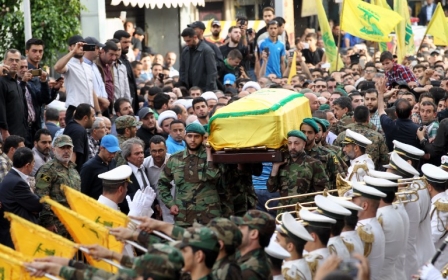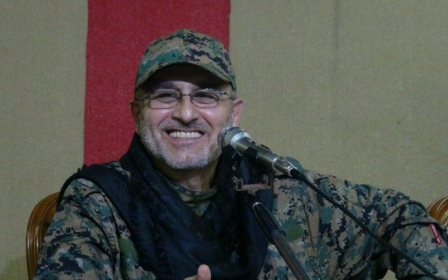Hezbollah to send more fighters to Syria: Nasrallah

Hezbollah leader Hassan Nasrallah on Friday said his Lebanese Shia movement would boost its support for Syria's government after one of its top commanders was killed there last week.
"We will increase and bolster our presence in Syria," Nasrallah said in a speech during a ceremony to mark a week since Mustafa Badreddine, the head of Hezbollah's military wing, was killed near Damascus.
"More commanders than before will go to Syria. We will be present in different ways and we will continue the fight," he said.
Hezbollah's intervention in Syria was considered vital in shoring up Syrian President Bashar al-Assad's government earlier in the more than five-year war against opposition rebels backed by Gulf Arab states and Western countries.
Its fighters secured most of the Lebanese border region, cutting vital rebel supply lines, and reasserted government control in most of the southern suburbs of Damascus, including the Sayyida Zeinab Shia shrine district.
Hezbollah said last week that Badreddine had been killed by rebel artillery fire, with Nasrallah on Friday vowing to avenge his death by inflicting a "great and final defeat" on those responsible.
But the circumstances of Badreddine's death remain unclear with earlier media reports citing Israeli security sources that he may have been killed by Syrian pro-government or Iranian forces in a dispute over Hezbollah's role in the conflict.
According to those reports, Badreddine had been planning to withdraw many of Hezbollah's forces back to Lebanon after suffering heavy losses, possibly a third of his fighters. The area where he was killed is technically under the control of the Syrian army and is also believed to host Iranian fighters.
Hezbollah expert Waddah Charara said Hezbollah has sent between 5,000 and 6,000 combatants to Syria and paid a heavy price for its support, with IS and al-Qaeda both launching attacks on Shia majority areas in Lebanon that have killed more than 100 civilians.
Hezbollah does not release Syrian casualty figures, but Israeli estimates last year suggested that as many as 1,500 Hezbollah fighters – or about a third of the group’s force in Syria - had been killed. Other sources suggest the figure could now be as many as 2,000, while data obtained from Iranian open sources put the casualty figure lower at 865 fighters between 30 September, 2012 and 16 February, 2016.
Middle East Eye earlier this week reported that Iran, which funds Hezbollah, was exerting more influence over the group and had even directly appointed Badreddine's successor as head of its military wing.
A source also told MEE that Iran had told Hezbollah to target Saudi Arabia, which many of its supporters blamed for Badreddine's death because of its support for Sunni rebel groups in Syria.
But Shahir Shahidsaless, a political analyst writing about Iranian affairs, told MEE that Hezbollah remained operationally independent of Iran.
"Yes, Hezbollah is very close to Iran, and the group was founded and is currently funded by Iran. But Hezbollah decides its policies independently based on the interests of Lebanese Shias and Lebanese national interests while Iran views the group as a major balancing and deterrent force against Israel," said Shahidsaless.
"Why is it fighting in Syria in tandem with Iran? Because, as Nasrallah has repeatedly said, its members believe that if they do not fight in Syria, they would have to fight against Sunni extremists in Lebanon."
Middle East Eye propose une couverture et une analyse indépendantes et incomparables du Moyen-Orient, de l’Afrique du Nord et d’autres régions du monde. Pour en savoir plus sur la reprise de ce contenu et les frais qui s’appliquent, veuillez remplir ce formulaire [en anglais]. Pour en savoir plus sur MEE, cliquez ici [en anglais].




